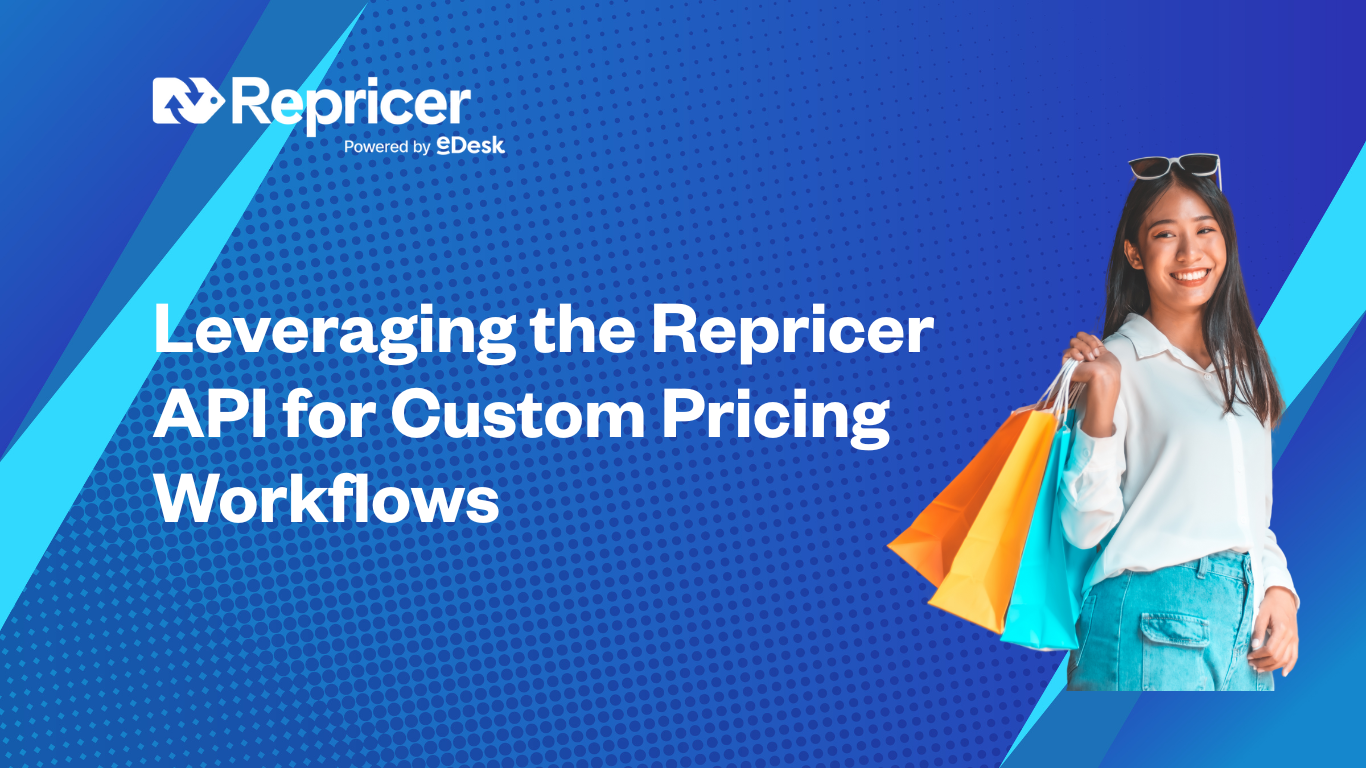When your business has grown beyond standard eCommerce solutions and you need pricing strategies as unique as your products, the repricer API becomes your secret weapon. While basic repricing tools work for simple scenarios, developers and businesses with complex systems need something more powerful: the flexibility to build custom pricing workflows that integrate seamlessly with existing infrastructure.
If you’re managing thousands of SKUs across multiple channels, running custom ERP systems, or need pricing logic that adapts to your specific business rules, you’ve likely hit the limitations of one-size-fits-all solutions. This is where API-driven repricing transforms from a nice-to-have into a competitive necessity.
Why Custom API Integration Matters in Today’s Market
The eCommerce landscape has never been more competitive. Global eCommerce sales are projected to reach $6.86 trillion in 2025, representing an 8.37% increase from 2024, with the sector claiming 20.8% of the total retail market. In this environment, manual pricing adjustments or rigid repricing rules simply don’t cut it.
According to recent surveys, 71% of digital businesses are consuming APIs created by third parties, with more than 50% of companies in retail/eCommerce spending significant time troubleshooting API integrations. The businesses that thrive are those that master API integration to create automated, intelligent pricing systems.
Understanding the Repricer API Advantage
The repricer API goes far beyond basic price matching. It’s designed for technical teams who need granular control over pricing decisions and want to embed repricing intelligence directly into their existing workflows.
Core API Capabilities
Real-time Data Access: Pull comprehensive pricing data, competitor analysis, and market insights instantly. Unlike static reports, the API provides live data streams that your systems can consume and act upon immediately.
Custom Rule Implementation: Build pricing logic that reflects your unique business model. Whether you need different margins for different product categories, seasonal adjustments, or complex multi-tier pricing structures, the API gives you the flexibility to implement exactly what your business requires.
Automated Decision Making: Set up webhooks and repricing triggers that automatically adjust prices based on your custom criteria. No more manual monitoring or delayed reactions to market changes.
Practical Use Cases for Custom Integration
Connecting to ERP and PIM Systems
For businesses running sophisticated backend systems, the connection of the repricer to ERP functionality becomes transformative. Instead of manually exporting and importing data between systems, you can create seamless, automated workflows.
Imagine your ERP system automatically triggering repricing rules when inventory levels change, or your PIM system updating pricing strategies when new product attributes are added. The repricer.com API documentation provides the endpoints and methods needed to build these integrations, allowing your pricing strategy to respond in real time to business data changes.
Building Custom Dashboards and Analytics
Standard repricing interfaces might not show the metrics that matter most to your business. With the automated pricing API, you can extract detailed repricing data and feed it into your preferred analytics tools or custom dashboards.
This approach enables custom reporting of pricing data that aligns with your KPIs and business objectives. You might want to track price elasticity by product category, analyze competitor response patterns, or measure the impact of pricing changes on inventory turnover.
Multi-Channel Price Synchronization
Managing pricing across multiple sales channels becomes complex when each platform has different requirements, fees, and optimal pricing strategies. The repricer API allows you to build intelligent multi-channel workflows that automatically adjust prices based on channel-specific rules while maintaining consistency with your overall pricing strategy.
API Key Management and Security Best Practices
When implementing custom repricing integration, proper API key management becomes crucial. The system supports multiple authentication methods and allows you to create environment-specific keys for development, staging, and production workflows.
For large organizations, this means you can implement proper access controls, audit API usage, and ensure that sensitive pricing data remains secure while still enabling the automation your business needs.
Data Synchronization and Workflow Automation
Modern eCommerce operations require data synchronization API capabilities that keep all systems in perfect harmony. The repricer API enables real-time synchronization between your repricing rules and external systems, ensuring that pricing decisions are always based on the most current data.
Webhook Integration for Real-Time Updates
Webhook’s repricing functionality allows your systems to receive instant notifications when significant pricing events occur. Rather than constantly polling for updates, your applications can respond immediately to competitor price changes, stock level alerts, or rule violations.
This event-driven approach reduces system load while improving response times, ensuring your pricing remains competitive without overwhelming your infrastructure.
Third-Party Software Integration Strategies
The third-party software integration capabilities extend far beyond basic data exchange. You can connect the repricing system to inventory management tools, accounting software, marketing automation platforms, and customer relationship management systems.
For example, you might integrate with your email marketing platform to automatically send notifications when prices drop on wishlisted items or connect to your accounting system to ensure pricing changes align with margin requirements and financial targets.
Getting Started with Implementation
When you’re ready to move beyond standard Repricer Integrations and build something custom, the process begins with understanding your specific requirements and mapping them to API capabilities.
The repricer.com API documentation provides comprehensive guides for authentication, endpoint usage, and best practices. Whether you’re building a simple data extraction script or a complex multi-system integration, the documentation offers code examples and implementation patterns that accelerate development.
For businesses evaluating whether API access aligns with their needs, reviewing the standard Repricer Features can help identify where custom functionality would provide the most value. Many organizations start with standard features and gradually implement custom workflows as their requirements become more sophisticated.
Working with Partners and Development Resources
If your internal team needs additional expertise, the Partners program connects you with experienced developers who specialize in repricing integrations. These partners understand both the technical aspects of API implementation and the business logic behind effective pricing strategies.
For organizations considering the investment in custom integration, reviewing the Pricing structure helps determine which plan includes the API access and support level your project requires.
Future-Proofing Your Pricing Strategy
With more than 70% of developers expecting to increase API usage in 2025 and beyond, building API-first pricing workflows positions your business for continued growth and adaptability. As your product catalog expands, your sales channels multiply, or your business model evolves, having a flexible, programmable repricing foundation ensures your pricing strategy can evolve alongside your business.
The eCommerce API pricing landscape continues to mature, with new integration possibilities emerging regularly. By implementing a robust API-based repricing system now, you’re creating a platform that can incorporate future innovations without requiring complete system overhauls.
Taking the Next Step
Custom repricing workflows represent a significant competitive advantage for businesses ready to move beyond manual pricing management. The repricer API provides the technical foundation, but success depends on thoughtful implementation that aligns with your business objectives and technical capabilities.
Whether you’re looking to connect repricers to ERP systems, build sophisticated analytics dashboards, or create automated pricing workflows that respond to real-time market conditions, the API provides the flexibility and power needed to implement exactly what your business requires.
Ready to explore what’s possible with custom repricing integration? The combination of comprehensive API capabilities, detailed documentation, and expert partner support ensures that your investment in automated pricing technology delivers measurable results for your business.





